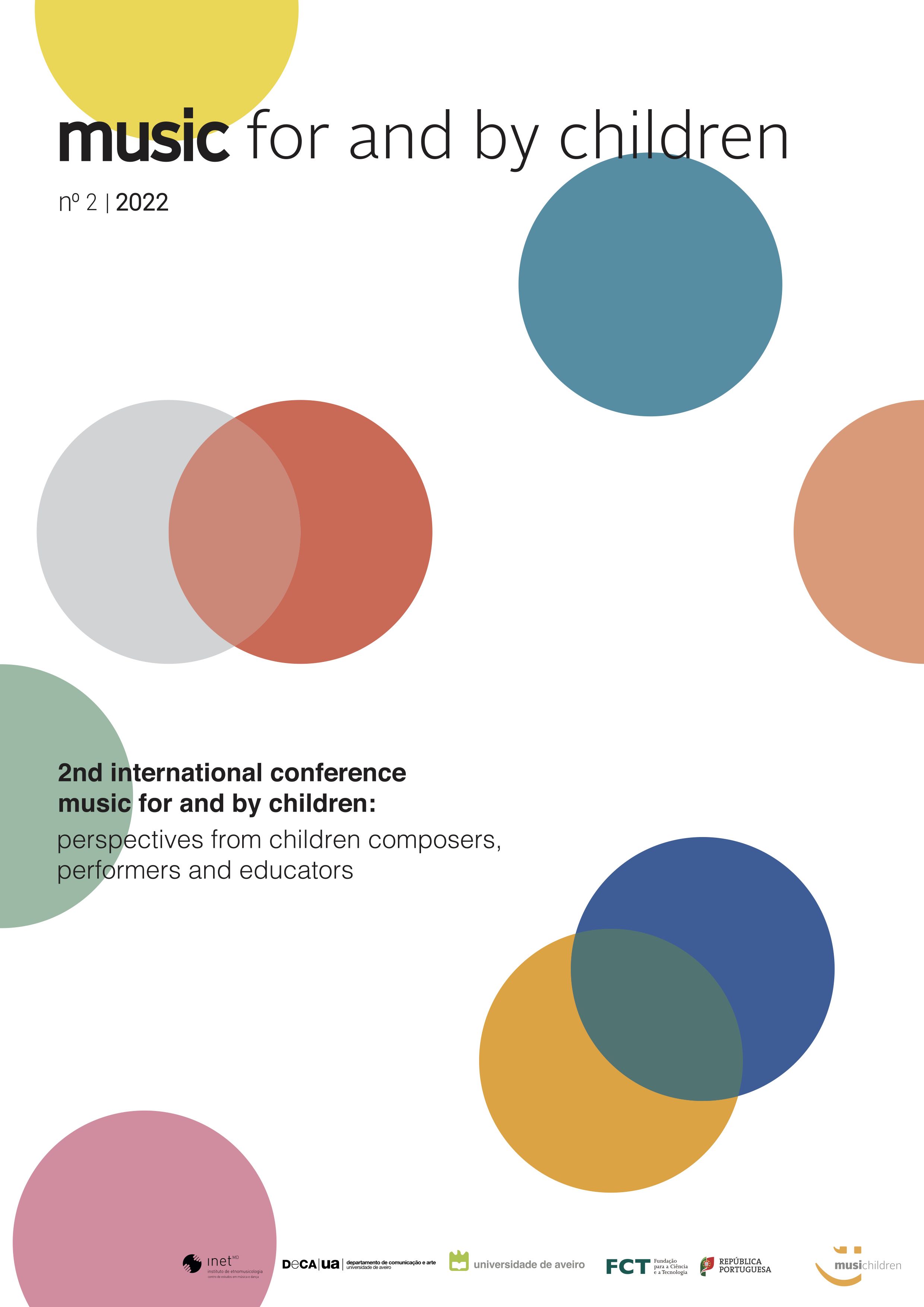Creating music in childhood
Ideas and practices from 20th century music education
Abstract
Theoretical background or Context
This paper stems from studies developed over the last decade and constitutes our post-doctoral research since 2021. It investigates ideas and practices of pedagogical innovation in music education during the 20th century. In this context, some aspects are notably addressed, such as music creation in childhood, on which we focus here. Along with the music education area and its connections to other fields such as psychology and philosophy (Beineke, 2009; Cunha, 2021; Brito, 2007), we dialogue with childhood studies (Sarmento, 2007; Corsaro, 2011) and the history of education (Cremin, 1961; Jacquet-Francillon, 2004).
Aims
We intend to discuss childhood images (Sarmento, 2007) and examine how they developed in music education during the 20th century. More specifically, the ideas and practices addressed are related to music creation in childhood. This examination also includes considerations on aesthetics and pedagogy. In doing so, we can likewise recognize the childhood images that guide and justify the adults’ approach to children in contemporary music education, since some of these conceptions remain today, even if tacitly.
Methodology
In order to investigate the ideas and practices of music creation with children in innovative pedagogical spaces, we work with documental sources, such as pedagogical magazines, schools’ booklets, photos, general press texts, sheet music, and sound records. The stages of searching and analysing documents more frequently take place in a digital environment since the beginning of the research and were essential to the work due to pandemic restrictions. Therefore, we considered the current discussions on digital history methodology (Lucchesi, 2014; Brasil; Nascimento, 2020). Even if we did part of the work in digital ambient, visiting archives and the process of analysing physical documents were likewise fundamental (Farge, 2017).
Results/Findings
The results presented are the analyses of ideas and practices as observed in the works of (i) Satis Coleman, at her Creative Music Studio and the Lincoln School of Teachers College, Columbia University (NYC, USA), in the 1920s and 1930s; (ii) Donald Pond, in his experiments at Pillsbury Foundation School (Santa Barbara, California, USA) between 1938 and 1945; and (iii) a group of music teachers in the context of the French Modern School Movement (also know as Freinet’s Pedagogy) in 1970s, that called their work Musique Libre. In these works, we can identify connections between music education and the evolutionary theories, both in musicology and in psychology; Rousseauian inspiration; among others.
Conclusions/Final considerations
The conceptions of childhood and music and their relations to creative practices observed in such examples are a sort of a portrait of experiments in music education in the 20th century. They guided and justified the actions of adults toward children and were the foundations of music education programs and methods. However, these ideas were not surpassed. Examining such conceptions allows us to understand and reflect on what constitutes our groundwork today. This kind of awareness is fundamental to teachers who intend to improve children’s participation and their musical development through creative practices in a critical way.
References
Brasil, E.; Nascimento, L. (2020). História digital: Reflexões a partir da Hemeroteca Digital Brasileira e do uso de CAQDAS na reelaboração da pesquisa histórica. Estudos históricos, 33 (69), 196-219. http://dx.doi.org/10.1590/S2178-14942020000100011
Brito, M.T. (2007) Por uma educação musical do pensamento: novas estratégias de comunicação. [Unpublished Doctoral dissertation]. Pontifical Catholic University of São Paulo, Brazil.
Corsaro, W.A. (2011). Sociologia da Infância. (2nd ed.). Artmed.
Cunha, S.M. (2021). Crianças pequenas e arte: expresses e significações. Em aberto, 34(110), 75-84. https://doi.org/10.24109/emaberto.v34i110.4587
Farge, A. (2017). O sabor do arquivo. São Paulo University Edition.
Jacquet-Francillon, F. (2004). L’Enfant comme personne: Un fondement culturelle de l’Éducation Nouvelle. In Ohayon, A.; Ottavi, D.; Savoye, A. (Eds.). L’Éducation nouvelle. Histoire, présence, devenir (pp. 29-45). Peter Lang.
Lucchesi, A. (2014). Por um debate sobre História e Historiografia Digital. Boletim Historiar, 2, 45-57.
Sarmento, M.J. Visibilidade social e estudo da infância In Vasconcelos, V.M.R.; Sarmento, M.J. (Eds.), Infância (in)visível (pp. 25-49). Junqueira e Marin.
Copyright (c) 2023 Music for and by children

This work is licensed under a Creative Commons Attribution 4.0 International License.





